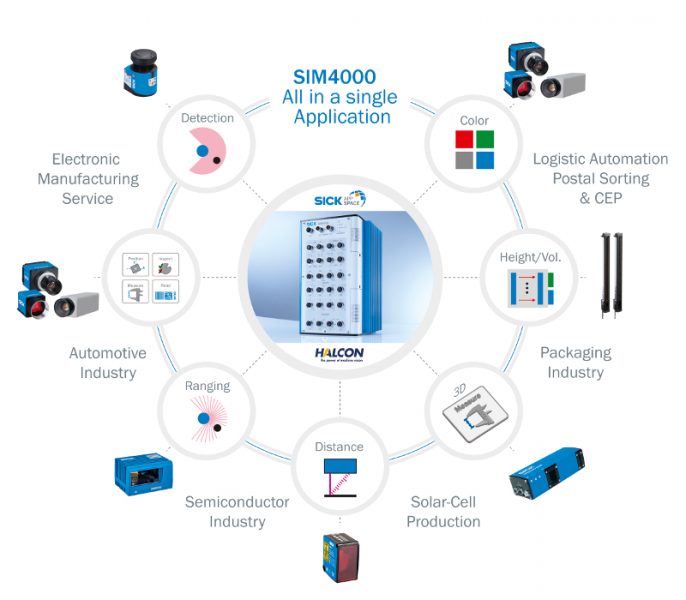SICK develops new programmable sensor solutions with the concept of Industry 4.0

The SIM400 Sensor Integration Machine enables sensors to be easily integrated across different technologies.
Photo by Sick AG
With its programmable sensor solutions and flexible concepts consisting of both software and hardware, SICK is taking a significant step in the direction of Industry 4.0 and networking the industrial value chain. Binary assessments, such as “yes or no” and “good or poor”, are being replaced by the development of individual applications based on the intelligent evaluation of a wide variety of data. This will allow the availability of industrial production processes to be taken onto a completely new level.
Automation architecture will undergo changes during the course of Industry 4.0. The existing levels of automation will be replaced by a number of different business models. Software will be installed not only on computers but also directly on sensors. In addition, sensors will acquire computing capacity and will be programmed individually. They will able to communicate with the cloud either directly or via a Sensor Integration Machine (SIM). The integration of sensors across different technologies is a particularly forward-looking and therefore future-proof solution. For the first time in this form, it enables digital objects to be completely transformed for data collection and archiving, in order to allow for quality control, process analysis and predictive maintenance in the context of Industry 4.0.
Flexible solution concepts for software and hardware
The fourth industrial revolution requires a visionary approach as fundamental changes are in the pipeline. Intelligent sensors with the ability to see will be able to collect large volumes of data and will function as more than just simple switches for controlling industrial production processes. Detecting good and poor quality parts using a sensor is the classic example of a binary assessment, but it is a long way from being a pioneering solution for a smart factory. However, if the data collected by the sensor can be used to take specific measures to prevent poor quality parts from being produced, this will bring about a huge increase in the potential added value and benefits of the solution.
SICK AppSpace represents a major step toward the digital future. The SICK AppSpace eco-system offers system integrators and original equipment manufacturers (OEMs) the freedom and flexibility to develop application software for their specific tasks directly on the programmable SICK sensors. This makes it possible to create customized solutions to meet customers’ individual requirements.
SICK AppSpace combines software and hardware and consists of two elements: the programmable SICK sensors and SICK AppStudio, a development system for applications. The flexible architecture and the programmable devices allow data to be generated for cloud services as part of Industry 4.0. The software is installed on the sensor and can transmit information directly. This provides users with the best possible support for quality control, traceability and predictive maintenance.
For more information, please visit http://www.sick.com.
News Categories
- » NEWS HOME
- » Automation & Robotics
- » Industry 4.0
- » Material Handling
- » Sensors
- » Quality & Testing
- » Machine Vision
- » Laser & Optics
- » Metalworking
- » Motion Control & Drives
- » Hydraulics & Pneumatics
- » Process Industry
- » Renewable Energy
- » Agriculture
- » Home & Office Furniture
- » Environmental Tech









